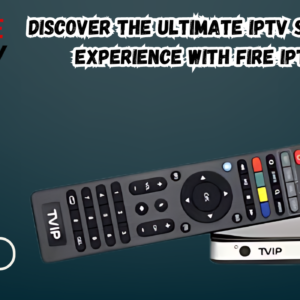Starting the journey of launching your food delivery application, inspired by the thriving success of UberEats goes beyond just stepping into a competitive market. It’s about creating a place for your brand and building a reputation that truly connects with your target audience. As you navigate through the realm of food delivery, there lies a great opportunity to enhance your brand and engage with customers on a deeper level.
Let’s dive into the key steps and tactics for developing a distinctive and engaging food delivery app that goes beyond just providing food, but building a devoted community, and reshaping the dining experience for your users.
Market Study and Brand Image
Understanding Your Customer Base
The cornerstone of a food delivery app hinges on comprehending the individuals you are serving. Your specific audience, with their preferences, routines and appetites should serve as the guiding light for all your decisions.
Delve into market research to unveil what drives your clients—what do they prioritize in a food delivery service? Is it speed, variety, user friendliness or affordability? Also, keep an eye on your competitors. Evaluating their strengths and weaknesses will not only offer insights but also help you pinpoint areas where your brand can uniquely excel.
It’s not about crunching numbers; it’s also about understanding the perspective of your clients predicting their requirements and creating a service that seems customized for them.
Defining Your Brand
In a marketplace, your brand represents your essence, your voice, your commitment to customers and to build a relationship with your target audience. When envisioning your version of UberEats consider more than a name or logo. What values and narratives define your brand? Perhaps it involves prioritizing sustainability, celebrating cuisines or aiming to offer the delivery service in town.
Your brand identity should be evident in every aspect of your application – from its design and communication style to user interactions and customer support.
Consistency plays a role; each interaction should reflect your identity and values that convert users into loyal supporters of your brand.
As you embark on this exciting venture, remember that building an UberEats clone is more than just a technical project; it’s an opportunity to create a brand that people love and trust.
By understanding your audience and defining your brand identity, you lay the groundwork for an app that’s not just functional but also meaningful, setting the stage for growth, engagement, and a stellar reputation in the competitive world of food delivery.
Essential Features of a Food Delivery Application
Venturing into the realm of food delivery applications involves integrating features that address user requirements while standing out from competitors. Here are key considerations:
User Registration and Profiles
- Registration choices through email phone number or social media.
- Personalized user profiles for managing orders, preferences and payment methods.
Restaurant Listings and Detailed Menus:
- A directory of restaurants, with filtering options based on cuisine type, ratings and proximity.
- Detailed menus featuring high-quality images, descriptions and customization
Order Placement and Payment Integration:
- A user system, for placing orders that allow customers to add items to their cart, customize their orders (like requesting no onions) and complete the checkout process smoothly.
- Various payment methods are available including credit/debit cards, digital wallets and cash on delivery to cater to preferences.
Order Tracking and Delivery Management:
- Real-time tracking of orders from preparation to delivery providing customers with updates at every step of the way.
- Efficient management tools for restaurants and delivery personnel including route optimization and estimated delivery times.
Ratings and Reviews:
- Features that enable customers to rate and review restaurants well as specific dishes fostering a community built on trust.
- Restaurant response capabilities in place to directly address customer feedback.
Push Notifications:
- Updates on order status, new promotions and deals to keep customers informed.
- Customized alerts based on customer behavior and preferences.
Loyalty Programs and Rewards:
- Incentive programs are designed to promote repeat business through points accumulation, discounts and exclusive offers for customers.
- Attractive elements like badges and leaderboards are introduced for a user experience.
Advanced Search and Filters:
- Utilizing algorithms powered by machine learning to analyze your preferences and order history we offer recommendations, for dishes and restaurants.
- Interactive “You might also like” prompts presented at checkout to enhance the value of your order.
Personalized Recommendations:
- Access in-app chat support for help with orders, payments or any other inquiries.
- Explore our help centre featuring FAQs and guides to troubleshoot issues.
Chat Support and Help Center:
- In-app chat support for immediate assistance with orders, payments, or other queries.
- Comprehensive help centre with FAQs and guides for troubleshooting common issues.
App Development and Design
The development and design phase marks the initiation of your food delivery apps transformation from an idea to a tangible product. At this crucial juncture, the benefits of a clone app become especially apparent, blending technical robustness with user-centric design to ensure your platform is not just functional but also highly appealing.
By leveraging an app framework you can leverage established structures. Features that streamline development while focusing on tailoring the user experience to align with your brand identity. This strategic approach guarantees that your app strikes a balance between reliability and innovation laying the groundwork for success in the competitive food delivery industry.
Selecting Appropriate Technology: The key to an operating app lies in choosing the right technology stack. When developing apps, for platforms it’s advisable to use Swift for iOS and Kotlin for Android as they offer features tailored to each system. If you’re looking to reach an audience with one codebase, solutions like React Native or Flutter can be budget-friendly options.
UX/UI Design Principles: Designing with the user in mind is key to the success of your app. Make sure your app not only looks good but also provides an intuitive experience for users. Focus on streamlining the journey from browsing to making a purchase ensuring it’s smooth and user friendly. A designed app reduces frustration. Boosts satisfaction, leading to higher user retention rates.
Responsive Design: In today’s diverse device landscape it’s essential that your app works seamlessly on screens of all sizes. Responsive design guarantees a user experience whether customers are using a phone, tablet or computer.
Security Measures: Security is paramount when it comes to protecting user data and earning trust in your platform. Implement security measures such as data encryption, secure payment gateways and compliance with privacy regulations.
Launching and Marketing Your App
Launching and promoting your food delivery app is a step that will shape its success. However, even the designed application can struggle without a thought-out marketing strategy to support it.
Beta Testing: Prior to the release conduct beta testing to gather authentic user feedback. This stage is essential for pinpointing. Resolving any glitches enhancing user-friendliness and ensuring that the application aligns with customer expectations.
Launch Strategy: Create a launch plan encompassing a schedule of targeted promotional initiatives and a method for acquiring initial user input. Consider introducing the app in regions or providing access to users to build excitement and obtain valuable feedback.
Marketing Mix: Utilize a blend of marketing tactics to advertise your application. This includes optimizing SEO for your app’s webpage employing content marketing to captivate users running social media campaigns to enhance brand recognition and utilizing advertisements to reach your intended audience. Additionally, consider collaborating with influencers and partnering with eateries to increase visibility.
User Engagement: After launching concentrate on maintaining user engagement through updates, new functionalities and personalized promotions. Make use of push notifications to inform users about offers or enhancements without inundating them.
Feedback Loop: Implement a system for gathering and evaluating user feedback. The continuous cycle of receiving feedback and making updates will help you enhance your app, address any issues and add features that users truly desire, leading to increased satisfaction and loyalty.
Conclusion
In summary, overcoming the challenges of developing an UberEats platform requires a blend of innovation, perseverance and strategic foresight. While facing obstacles such as a market acquiring users and building partnerships with restaurants and delivery services may seem daunting they are not insurmountable.
Your success hinges on offering value propositions, seamless user experiences and exceptional customer service. Additionally catering to preferences and ensuring compliance with regulations will greatly influence the reception and growth of your platform. By implementing a thought-out strategy to tackle these challenges head-on, your food delivery app can carve its niche, captivate users and thrive in the digital landscape. Ultimately establishing itself as a reputable brand, with a loyal customer base.





